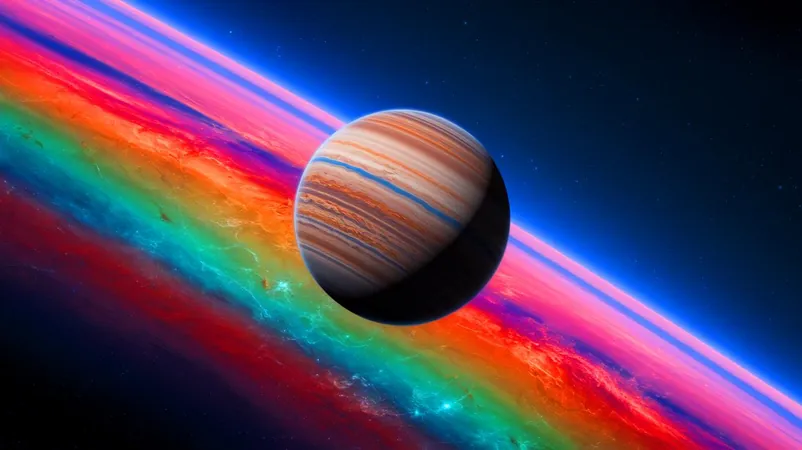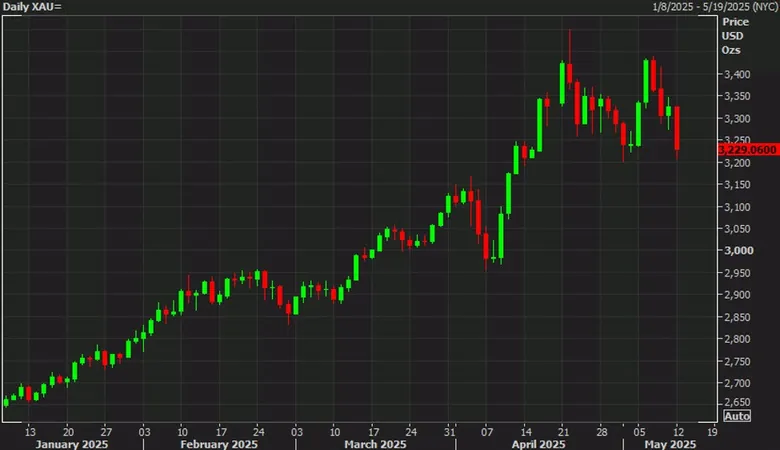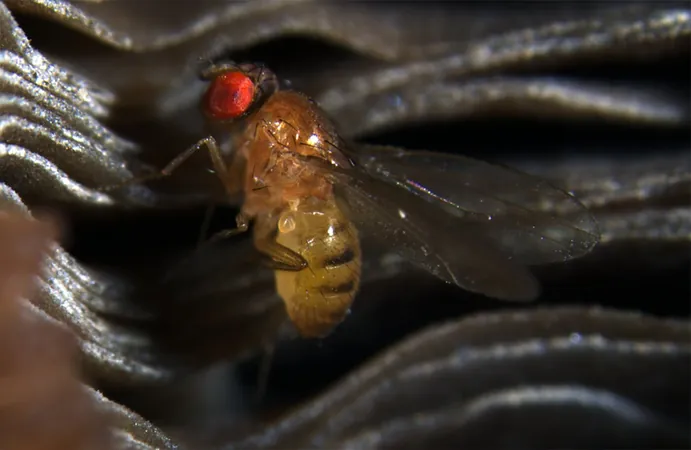
Unveiling the Secrets of K2-18b: Could This Exoplanet Host Life?
2025-04-22
Author: Michael
An Extraordinary Discovery 124 Light-Years Away
The cosmos is brimming with enigmas, and recent revelations from the James Webb Telescope about the exoplanet K2-18b have sparked worldwide fascination. A remarkable 124 light-years distant in the Leo constellation, K2-18b has become the centerpiece of astronomers’ and enthusiasts’ attention, with signals hinting at a potentially life-supporting biosphere.
K2-18b: A Colossus Among Planets
Having been discovered just a decade ago, K2-18b stands out due to its colossal size and intriguing features. This exoplanet is 2.6 times the diameter of Earth and boasts a mass 8.6 times greater. These considerable dimensions point to its classification as a ‘ocean planet,’ possibly shrouded in a dense, hydrogen-rich atmosphere. Armed with the MIRI instrument, the James Webb Telescope continues to unravel the mysteries surrounding this fascinating world.
Potential Signs of Life?
K2-18b's unique atmospheric composition is a captivating subject for study. The potential existence of vast oceans, combined with its thick atmosphere, hints at environments that could support life. Each discovery brings humanity closer to understanding the distinct characteristics of this far-off planet.
Chemical Clues from Distant Worlds
An international team of scientists has identified two intriguing molecules in K2-18b’s atmosphere: dimethyl sulfide (DMS) and dimethyl disulfide (DMDS). On Earth, these compounds are solely produced by marine organisms, hinting at possible biological processes. Moreover, in 2023, methane and carbon dioxide were also detected, suggesting complex atmospheric chemistry.
What Do These Molecules Mean?
The presence of these molecules is crucial as they could potentially serve as biosignatures—indicators of life. However, scientists approach these findings with caution, understanding that these compounds might also arise from non-biological processes. Further analysis of these chemical signals will be essential in determining whether they genuinely indicate a living biosphere on K2-18b.
A Glimmer of Hope for Extraterrestrial Life?
The data hints at the possibility of a biosphere, with DMS concentrations estimated at 10 parts per million—significantly higher than what’s found on Earth. Despite a confidence level noted at three sigma, suggesting encouragement, we must tread carefully. High DMS levels could stem from unknown chemical reactions or geological activity unique to K2-18b.
Scientists Tread Cautiously
The astrophysics team at Cambridge expresses a blend of optimism and caution. While speculative excitement surrounds the potential for extraterrestrial life, researchers are diligent in evaluating all possible origins for the identified molecules. Some theories propose unknown chemical reactions or volcanic activities beneath its hydrogen-rich envelope.
The Road Ahead for Research
To resolve existing uncertainties, scientists must refine their observations. While reaching K2-18b remains a distant dream—Voyager 1, traveling at 38,000 miles per hour, would need over two million years to arrive—projects like Breakthrough Starshot aim to revolutionize this pursuit by achieving 20% of the speed of light.
The Quest Continues
As technology advances, the potential to explore K2-18b becomes more tangible. These ambitious missions underscore humanity's relentless quest for knowledge, propelling us to explore the universe and uncover its hidden marvels. With the James Webb Telescope undertaking further explorations, the quest for extraterrestrial life remains one of humanity’s most inspiring endeavors. What groundbreaking revelations lie ahead?









 Brasil (PT)
Brasil (PT)
 Canada (EN)
Canada (EN)
 Chile (ES)
Chile (ES)
 Česko (CS)
Česko (CS)
 대한민국 (KO)
대한민국 (KO)
 España (ES)
España (ES)
 France (FR)
France (FR)
 Hong Kong (EN)
Hong Kong (EN)
 Italia (IT)
Italia (IT)
 日本 (JA)
日本 (JA)
 Magyarország (HU)
Magyarország (HU)
 Norge (NO)
Norge (NO)
 Polska (PL)
Polska (PL)
 Schweiz (DE)
Schweiz (DE)
 Singapore (EN)
Singapore (EN)
 Sverige (SV)
Sverige (SV)
 Suomi (FI)
Suomi (FI)
 Türkiye (TR)
Türkiye (TR)
 الإمارات العربية المتحدة (AR)
الإمارات العربية المتحدة (AR)